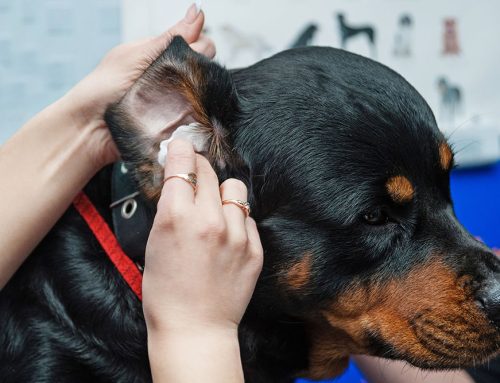For a pet, coming to the veterinary office can elicit stressful and emotionally reactive behavior. At Morris Animal Hospital, we strive to make every visit less stressful. Setting pets up for emotional success can start at home and be carried out through the entire veterinary visit,however, some emotionally reactive pets require medicinal assistance to permit the most effective medicine and allow for a thorough physical exam.
It is important to recognize signs of stress. Dogs’ stress can be expressed as excessive panting,yawning, lip licking, tucked tail, enlarged eyes or “whale eyes”, snarling, barking, or in the more severe cases, biting. Cats can have excessive shedding or “blowing their coat”, sweaty paw pads, hiding, hissing, tucked tail, and if they feel extremely threatened hitting or biting. Reading pets’ body language guides the appropriate approach the owner and the veterinary staff need to take to make the visit better[1].
The owner can take action to prepare pets with stressful vet visits. Food is commonly used to help pets associate a stressful experience with something pleasurable. Bringing the pet in hungry for a routine vet visit can allow for many treats to be used for positive associations as well as bringing a favorite treat, something that the pet holds in high value. For some pets, a favorite toy or blanket can be used to help comfort them (so long as the pet does not guard the valuable item, this can be helpful). Another step owners can take is to bring pets in for a friendly visit, where they just get a treat and praised for being at the vet without any procedures. Pheromones are another great tool to use.[1] At Morris, we use pheromones with almost every feline patient and also incorporate them for stressed canines. This allows for a natural chemical message to be delivered to patients through their special sensory organ called the vomeronasal organ.[2]
Even with all the above tactics implemented, some patients are in extreme emotional distress and need to have either (or both depending on the severity) calming medications administered at home or injectable medications administered by the veterinarian at the time of the vet visit. This step is taken in cases of extreme stress to help the pet, owner, and the veterinary staff to allow for the optimal care.
A common at-home medication that can help is trazodone. Veterinarians consider the severity of stress for each patient and write a prescription based on what they believe will be most effective. Trazodone is a serotonin antagonist and reuptake inhibitor, and works by increasing the availability of the neurotransmitter serotonin in the central nervous system for a longer period of time. Serotonin is a compound that allows for mood stability.[3] Trazodone, therefore, allows pets to feel more at ease chemically and not just sedate their body.
Gabapentin, used commonly for feline patients, is an at-home medication that again veterinarians prescribe based on the severity of stress in the patient. It is meant to approximate a synthetic version of the neurotransmitter gamma-aminobutyric acid (GABA) which is the most prevalent inhibitory neurotransmitter in the central nervous system. [4] An inhibitory neurotransmitter blocks messages sent between the nerve cells and the central nervous system. GABA specifically blocks certain nerve signals agitated by anxiety and stress to reduce fear in the body. Patients who take gabapentin commonly will feel more at ease at the vet because the body is assisted to have more synthetic GABA available to use.[4]
To give the best opportunity for effectiveness, it is imperative that the medication is administered exactly as the veterinarian directs. It is also important to keep in mind that some pets do need additional assistance delivered by the veterinarian at the time of the appointment even if all the steps are taken to improve the Fear Free experience. Medication is only administered if it is absolutely needed to give the best medicine and emotional experience.
1. Fear Free
2. Feliway
3. Technician’s Corner: Medication For Fear-Free Visits
4. Michelle Pugle What Is GABA?A neurotransmitter known as gamma-aminobutyric acid








Leave A Comment